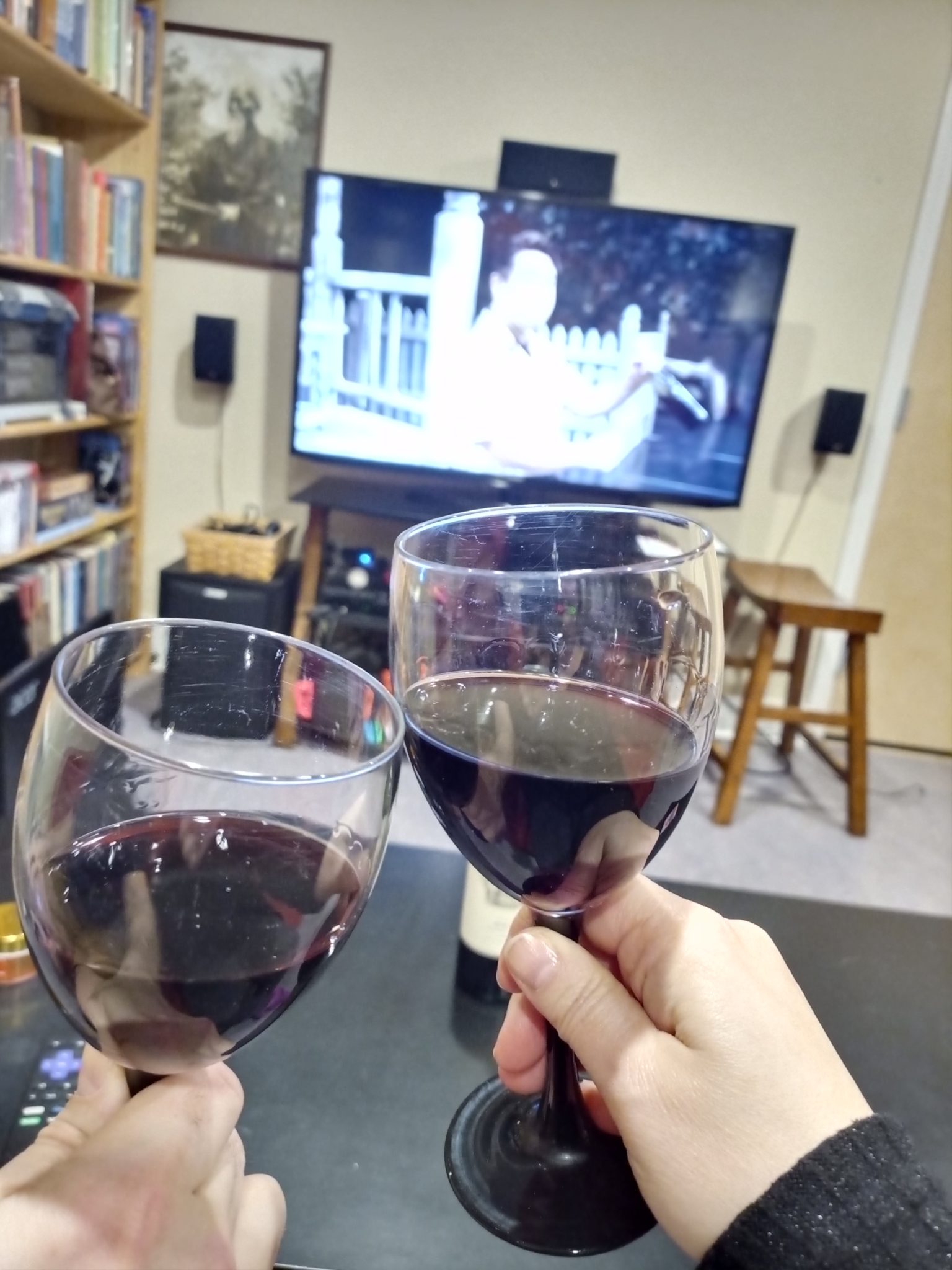Seattle Opera’s The Elixir of Love is quite possibly the first fully staged, filmed opera produced under social distancing protocols. With this production, Seattle Opera proves that it’s possible to keep enjoying opera – even full operas and not just recitals – while live performances are unavailable. The filmed format presents interesting opportunities for reinterpretation. And although it’s coincidental (The Elixir of Love was already planned for this season before the pandemic hit) there are ways in which The Elixir of Love is particularly well suited for this type of adaptation. So even though it’s not the same as being there, and not quite as good as being there, The Elixir of Love on film stands on its own as a fun opera experience.

The Elixir of Love
The Elixir of Love is an 1832 comedy by Donizetti, one of the three big bel canto composers. Beautiful music is always appreciated. But where too many bel canto operas are all about women dying tragically for love, no one dies tragically in The Elixir of Love. In fact, the only death in the opera is a much talked-about rich old uncle we never see. On the whole, the characters are tragically stupid, but no one ends up any the worse for their stupidity, so we’re free to laugh at their bad choices. As the director, David Gateley, says in the program, “Comedy is always apropos,” and right now, we all need a good laugh.

A Distant Staging
The production was fully staged with sets, costumes and blocking. But instead of a full orchestra in the pit, two masked pianists shared the stage with the singers (other soloists occasionally appeared onstage as well). Everyone always maintained six or more feet of distance from each other on stage. Sometimes this resulted in some awkward scurrying. But just as often, characters’ obvious avoidance of each other played to comic effect – most of the time it was seamless. This was helped by the use of multiple cameras and film editing, rather than the old-school approach of a single camera with an audience member’s POV.

I miss hearing Seattle Opera’s full orchestra, and if the original opera had any big chorus numbers, they were cut out. But the ensemble pieces where everyone sings their own feelings over top of each other were still there and were just as funny as ever. (Although they maybe seemed a bit more realistic than usual, considering today’s political climate).
Campy Fun
This particular production has a mid-20th century aesthetic and leans into camp with both the set and acting. The town square set, with its gazebo and picket fence, might belong to a community theater and fits perfectly with the Doctor’s straw hat and Vespa. You can easily imagine the people whose social lives center on that town square (as well as the community troupe of actors who would use such a set) falling for his snake oil sales pitch.

I’m not sure how much of the simple set and the pratfalls are part of the original plans for the production, and how much a response to the circumstances. But whether intentional or not, I think it was a brilliant way to help audiences let go of grandiose operatic expectations. Not only did it suit the reduced nature of the presentation, but it even made for a bit of irony that such a campy production was mediated and made possible by technology.
The Performances
I knew the two women in the production already. Madison Leonard sang Adina. Her talent portraying ingenues has made her a regular at Seattle Opera (I’ve seen her now in Steve Jobs and Rigoletto). Giannetta was a small role, but I didn’t even recognize Tess Altiveros, who impressed me so much in O + E, so now I’m very curious to see what else she can do. It’s so rare for a singer to also be able to disappear into an acting role.
I had not seen most of the men before. Andrew Stenson was in the Seattle Opera Young Artists Program and sang in Daughter of the Regiment, but not on the day I attended. Physical humor is hard to pull off when you’re singing bel canto (you just try singing while hopping on one foot), but Stenson’s Nemorino was a hilariously dopey bumpkin whose every move contrasted with his tenor. As with Oliveros, I didn’t even recognize barihunk Michael Adams (who was so impressive as Eugene Onegin last year), even though I’ve already recognized his penchant for playing obnoxious men. Like my husband said of his Sergeant Belcore, “It’s really impressive to sing that well and still convey ‘pompous ass’ with your tone of voice.”
I had actually seen Patrick Carfizzi before – as Count Ory’s tutor back in 2016. Although that wasn’t as big a role, I think it gave him more to work with musically. Still, for Elixir, Doctor Dulcamara is kind of the main character. It felt a little weird at first when he switched from narrating in English to singing in Italian. But I got used to it. Maybe the English parts summarized scenes with too many people to fit on a pandemic stage?
The actor David Hsieh filled a silent part as the doctor’s plant. The silent humor made me realize just how often Seattle Opera (opera in general?) relies on visual performers. They inject additional humor and information into a story where the libretto doesn’t provide it.
Cast
Giannetta………………………………………………………………………………………….Tess Altiveros
Nemorino ……………………………………………………………………………………Andrew Stenson
Adina …………………………………………………………………………………………Madison Leonard
Sergeant Belcore …………………………………………………………………………Michael Adams
Doctor Dulcamara ……………………………………………………………………….Patrick Carfizzi
Peasant Actor ……………………………………………………………………………………David Hsieh
The Details
Available Nov. 13–Dec. 4 by subscription. Subscriptions to the 2021 Spring Season are on sale and include the full 2020 virtual fall season.
Music by Gaetano Donizetti
Libretto by Felice Romani
Online stream recorded on the McCaw Hall stage at Seattle Center Studios.
{I purchased a Seattle Opera Fall Season subscription for full access to digital content generated during the pandemic.}




About the author